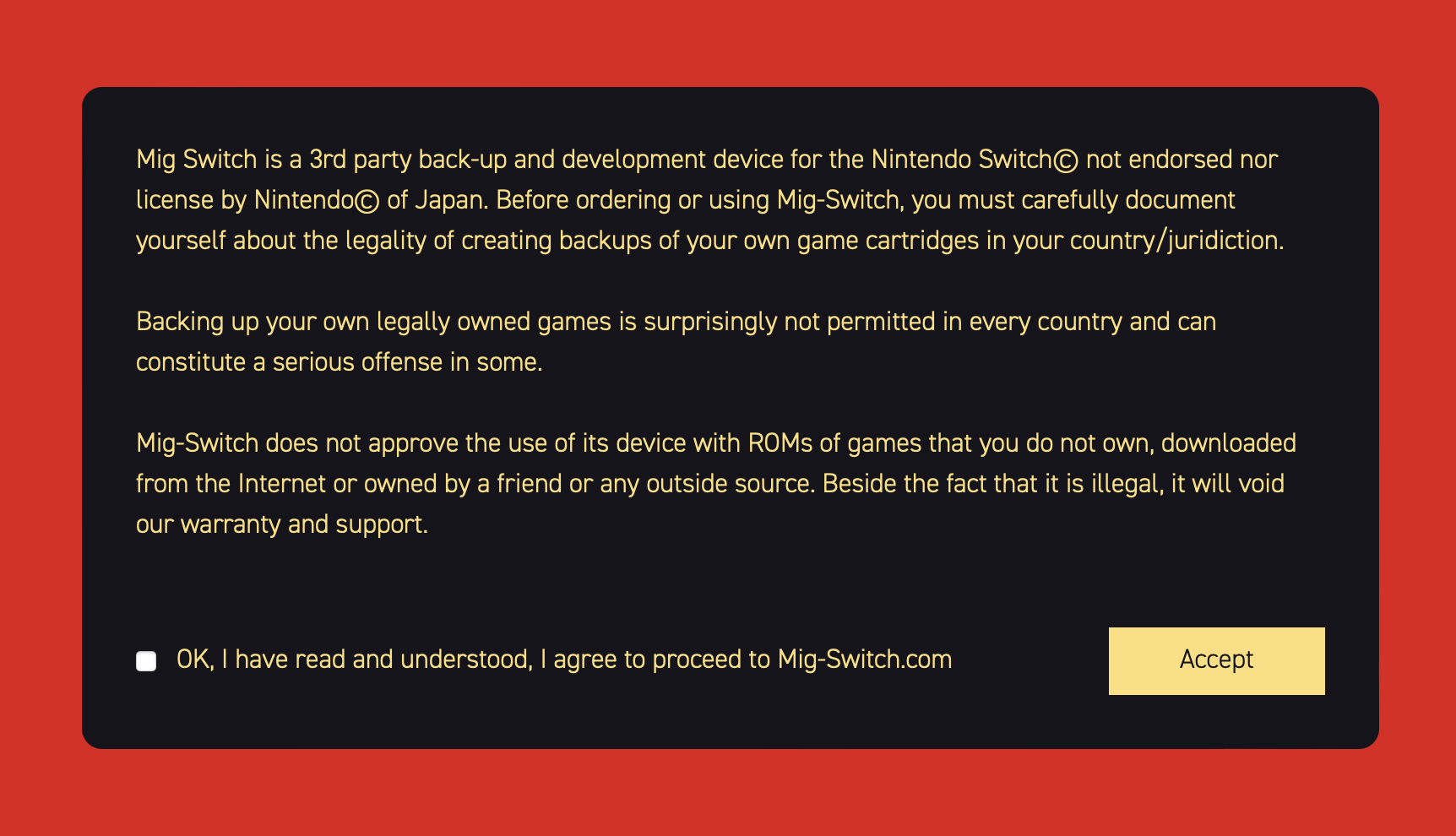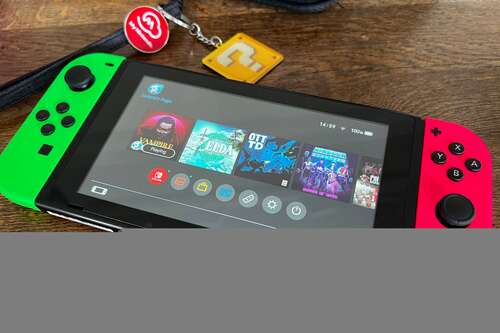Key Takeaways
- The MiG Switch card & ROM Dumper make it easy to clone Switch games.
- Cloned Switch games will eventually enter the market and put innocent second-hand buyers at risk of being banned by Nintendo.
- Nintendo may also struggle to combat counterfeit games based on the same technology.
Buying your Switch games second-hand is a great way to minimize the Nintendo tax, but it’s about to get riskier. Thanks to the arrival of some new hardware, buying used Switch games could land you in hot water with Nintendo. Here’s what you need to know.
Introducing the MiG Switch Card and ROM Dumper
The MiG Switch card is a flash cartridge designed for all models of Nintendo Switch that allows you to play Switch games directly from a microSD card. The MiG Switch Dumper is a device for “dumping” software copies of games (known as ROMs) to an SD card for use with the MiG Switch card.
It’s been possible to dump Switch ROMs for years using a modified Switch that’s running custom firmware. Dumped ROMs typically consist of a single file that can be played using modified Nintendo hardware or on an emulator. While emulating a platform isn’t necessarily illegal, creating ROMs may be, and disseminating them certainly is.
Until now, it wasn’t possible to spit out an exact replica of a game cartridge. Notably absent was the ROM certificate, a file that identifies each Nintendo Switch cartridge as a unique entity. This is what makes it possible to claim Nintendo Rewards once per cartridge.
The MiG Switch changes that. Thanks to the presence of a cheap, sub-$10 ESP32 microcontroller and an FPGA—a type of chip that can be reprogrammed on the fly—the MiG Switch dumper can grab all of the data from a Switch game cartridge, including that all-important unique ROM certificate.
With these files, the MiG Switch card can perfectly emulate a unique cartridge. The Switch console cannot tell the difference between the original game card and the MiG Switch with a microSD card in it. In the US, the MiG Switch card and ROM dumper cost around $70 each at retail.
These devices are marketed at those who want to create backups of their physical game cartridges so that they only need to carry a single cartridge with them to access a range of games. This sounds great in theory, but you can probably already see where this is heading.
You May Unwittingly Buy Cloned Games
There’s no point pretending that Nintendo Switch piracy doesn’t exist, but until now it has largely been a pursuit that requires technical know-how and care. Switch pirates playing on original hardware know all too well that their consoles could be banned by Nintendo, which is why playing pirated titles in an offline state is so important.
But now the game has changed. Switch games and Nintendo titles, in general, are notoriously expensive. Buying second-hand is a great strategy for anyone looking to save some money. Cartridges are more durable than the optical media used by Sony and Microsoft consoles, so there’s been relatively little risk in doing so until now.
Let’s say you’re looking to pick up a used copy of Super Mario Bros. Wonder. You pay your money, receive the game, put it in your Switch, and everything works as expected. But it turns out that the seller has cloned the game without your knowledge. They don’t disclose this fact to you, and there’s very little you could have done to avoid it.
Nintendo notices that two copies of Super Mario Bros. Wonder with the same unique cartridge identifier are online at the same time. Who do they ban? Now let’s say that the seller has uploaded this version of the game and shared it with thousands or potentially millions of people.
You won’t know, your Switch won’t know, but Nintendo will know. What are the odds of your console being banned? You did nothing wrong, after all. The MiG Switch got a final release in early 2024, but in time the hardware and its clones will saturate the market and the problem will become far more widespread.
Fake Games Could Flood the Market
Now that the cat is out of the bag, there’s a real concern that the problem will scale up exponentially. Considering that the Switch cannot tell the difference between a device like the MiG Switch card and a genuine Switch cartridge, we may be about to see an explosion in counterfeit Switch games.
One thing we know is that the chips inside the MiG Switch are relatively inexpensive, as are memory modules. The MiG Switch card and its dumper are being sold at a premium due to demand and market position in the early stages. These costs will fall, especially at scale.
Counterfeiting operations are big business, and markups on video games are particularly lucrative. This is bound to be an attractive proposition for someone operating outside of the law. These games could easily be passed off as the genuine article on online marketplaces.
By the time the seller has been rumbled, they’ve set up shop elsewhere and moved on. With so many Switch consoles in the wild, there’s a strong demand for games especially at prices that undercut typical brick and mortar retailers.
What Can You Do?
There are a few things that you can do to avoid buying a cloned game or a counterfeit title. The first is to stay away from the used game market entirely. Only buy new game cartridges from trusted resellers, or buy digitally via the Nintendo eShop.
Remember that retailers who deal in used games are also potentially at risk of disseminating cloned copies. Brand-new games shouldn’t be an issue as long as you trust the retailer. Unfortunately, this means paying top dollar for your games.
It’s also worth noting that you should be careful when lending any games to friends or associates.
What Will Nintendo Do?
At the time of writing in March 2024, Nintendo has yet to acknowledge the problem. It’s impossible to predict how to deal with these problems. Banning accounts that have unwittingly fallen victim to cartridge seems unnecessarily harsh. At the same time, it’s unlikely that ignoring the problem is an option for the Big N.
With the follow-up to the Switch on the horizon, Nintendo has the option of cutting the Switch off entirely and starting fresh. But there’s bound to be a backlash if a successor doesn’t include some sort of backward compatibility with existing libraries.
It’s also not Nintendo’s style to simply drop a platform, particularly one as successful as the Switch. The Nintendo 3DS continued to receive new releases for years after the Switch was released.
For now we’ll have to wait and see what happens. Since the MiG Switch hardware is manufactured in Russia, it’s going to be a challenge for Nintendo to shut down production. It’s also unlikely that this will help in the longterm, as copycat devices appear that offer the exact same functionality.





